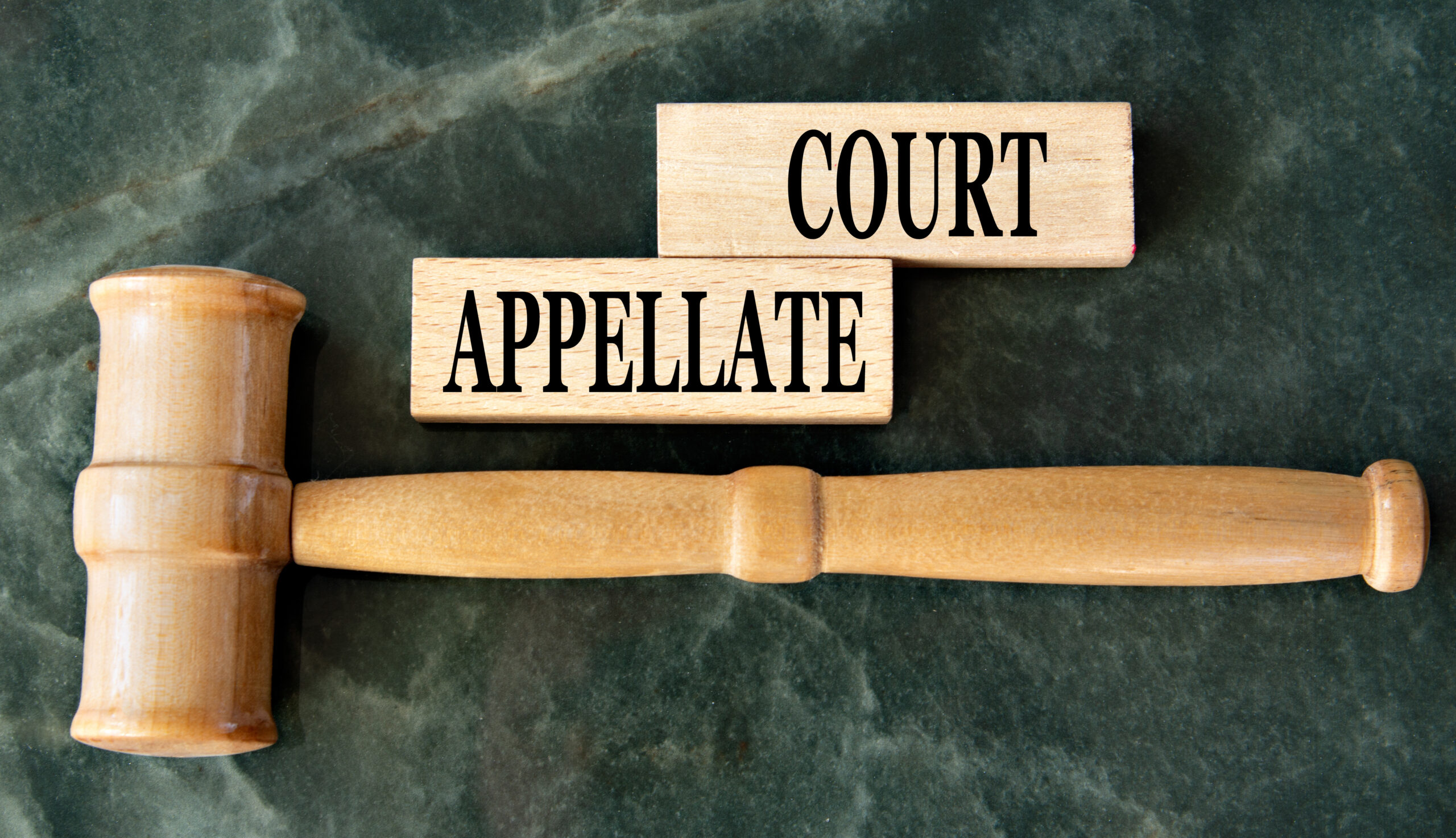The current Bankruptcy Code went into effect on October 1, 1979. One of the fundamental provisions of the Bankruptcy Code is the automatic bankruptcy stay which, as its name implies, automatically halts almost all collection activity against the debtor and the debtor’s property. Even though the law has been around for close to 40 years, and many issues concerning the stay and violations of the stay have been decided, discussed, reported and written about, there are apparently still some people who either refuse to acknowledge it or just don’t get it. “Stay” means “stay.” “Stop” means “stop.” “Any action” means “any action.” Despite the clear pronouncement of the statute, the Courts have had to intercede many, many times, explaining the law, enforcing the stay and imposing sanctions for violations. Savvy creditors know better than to run afoul of the stay’s broad debtor protections and behave accordingly.
In a recent case that reached the Third Circuit Court of Appeals, thirty-eight years of automatic stay jurisprudence culminated in a decision that demonstrates, if nothing else, that if you didn’t know, now you know.
In In re Lansaw, the Debtors operated a daycare at premises they leased from Zokaites. The Debtors planned to move their business to a new location. When Zokaites found out about the planned move, he served the Lansaws with a Notice for Distraint, claiming a lien against the Lansaws’ personal property for unpaid rent. The following day, the Lansaws filed for bankruptcy, thereby triggering the automatic stay. Zokaites’s lawyer was notified.
Zokaites, nevertheless, violated the automatic stay in three separate incidents, described by the Court as follows:
First, on August 21, 2006, Zokaites and his attorney visited the Lansaws’ daycare during business hours to take photographs of the Lansaws’ personal property. Although Mrs. Lansaw initially denied Zokaites entry, Zokaites entered the daycare by following a daycare parent inside. Zokaites then entered Mrs. Lansaw’s office and backed her against the wall, getting so close that she could feel his breath. During the incident, Zokaites asked Mrs. Lansaw three times in quick succession, “Do you want to hit me?”
Second, on Sunday, August 27, 2006, Zokaites visited the daycare after business hours and, this time, used his key to enter the building. He observed that the Lansaws had removed some personal property and plumbing fixtures from the space. Zokaites then padlocked and chained the doors. Mrs. Lansaw’s mother, who had arrived to clean the daycare, attempted to stop Zokaites and called the police. A police officer, as well as the Lansaws, arrived at the daycare shortly thereafter. Zokaites suggested that Mrs. Lansaw inform the daycare parents that the daycare would not be open the next day. At the request of a police officer, he allowed Mrs. Lansaw to reenter the daycare and obtain the parents’ contact information. Zokaites, however, insisted that Mrs. Lansaw be escorted in and out of the property by the officer.
After the Lansaws returned home, they received a call from their attorney informing them that Zokaites had left a proposed “interim standstill agreement” in the door of the daycare. It stated that Zokaites would not unchain the daycare doors unless (1) Mrs. Lansaw’s mother agreed that she had not been assaulted by Zokaites, (2) the Lansaws reaffirmed their lease with Zokaites, and (3) the Lansaws ceased removing property from the daycare. The Lansaws informed their attorney that the agreement was not acceptable. They then returned to the daycare, removed the chains themselves, and decided to sleep in the building to prevent Zokaites from chaining the door again. Later that night, Zokaites also returned to the daycare. Before the Lansaws could reach the door, Zokaites removed Mrs. Lansaw’s keys that had been hanging from the inside keyhole and locked the door from the outside. Zokaites left with the keys, which included personal keys in addition to the daycare keys, and returned to his vehicle. The Lansaws called the police once more.
Finally, on August 28, 2006, Zokaites directed his attorney to send a letter to the Lansaws’ new landlord. The letter demanded that the new landlord terminate the Lansaws’ new lease and stated that, if the lease was not terminated, Zokaites would file a complaint. A draft of that complaint was included with the letter. Zokaites’s attorney also admitted having multiple phone calls with the new landlord in an attempt to have the new lease terminated.
The Bankruptcy Judge found the violations to be egregious. He credited Mrs. Lanshaw’s testimony that she had suffered emotional distress, noting that she was often in tears when in Court. The Bankruptcy Court awarded the Lanshaws $2,600 in attorney’s fees, $7,500 in emotional distress damages and $40,000 in punitive damages. The district court affirmed.
On appeal, the Third Circuit addressed several issues. The first question was whether emotional distress damages are “actual damages” under Section 362(k)(1), which states that “an individual injured by any willful violation of a stay provided by this section shall recover actual damages, including costs and attorneys’ fees, and, in appropriate circumstances, may recover punitive damages.”
After reviewing several lines of authority, including the legislative history of the Section, the Court determined that the approach taken by the Ninth Circuit in Dawson v. Washington Mut. Bank, F.A. (In re Dawson), 390 F.3d 1139, 1148 (9th Cir. 2004) was the better approach, concluding that that Congress intended the automatic stay to protect both financial and nonfinancial interests. Accordingly, the Third Circuit joined a growing number of circuits by expressly concluding that “actual damages” under § 362(k)(1) include damages for emotional distress resulting from a willful violation of the automatic stay.
The Court than considered whether the Debtors had presented sufficient evidence to sustain their emotional distress claim. After reviewing the findings of the trial court, the Court of Appeals concluded that the Debtors had, indeed, presented sufficient evidence to support the finding. In doing so, the Court declined to require medical evidence, and did not require strict proof of causation, noting that “Zokaites’s stay violations were so egregious that a reasonable person could be expected to suffer some emotional harm and that the Lansaws credibly testified that the violations did cause such harm.
In addressing the sufficiency of the proof, the Court concluded: “plaintiffs claiming emotional-distress damages under § 362(k)(1) must demonstrate, as required by the statute, that they suffered “actual” emotional harm caused by the willful stay violation. The evidence necessary to demonstrate such harm will likely vary from case to case. But, at least where the evidence also shows that the stay violations were patently egregious, a plaintiff’s credible testimony that the violations did in fact cause emotional distress is sufficient to support an award of damages.” The Court also upheld the award of punitive damages as being in line with previous awards and not sufficiently excessive to be unconstitutional.
The lessons of the case are clear: bankruptcy stay violations can be punished by an award of actual damages, attorney’s fees and punitive damages. If the conduct is sufficiently egregious, damages for emotional distress are recoverable and, moreover, can be supported by the debtor’s testimony alone, as can proof of causation. While medical evidence may be helpful, in cases where the conduct is such that a reasonable person would suffer emotional harm, it is not required.
As mentioned at the outset, the automatic bankruptcy stay has been around for quite a while. Possible defenses for violations, such as reliance on the (incorrect) advice of counsel or assertions of good faith will not hold up. If the debtor suffers actual damages as a result of a violation, the creditor can expect to be held to account for those damages, including attorney’s fees, which can be expected in virtually every case. In egregious cases, awards for emotional distress and punitive damages can be anticipated as well. Creditors should be guided accordingly.
Update: Bankruptcy Courts Continue to Award Sanctions and Damages for Emotional Distress (September 2017)









